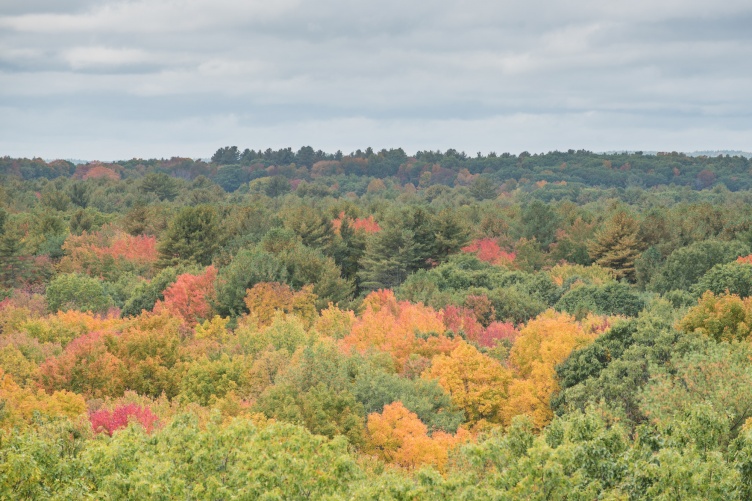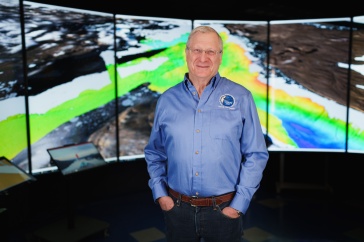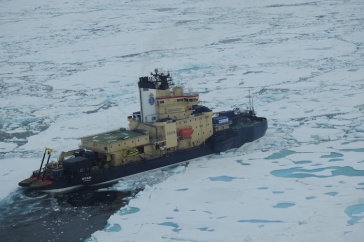
It takes more than just an aerial view to actually see the forest for the trees. UNH researchers have received a three-year, $200,000 grant from NASA to improve the satellite-based estimates of forest growth rates in the Northeastern U.S. Results from this project could lead to more accurate carbon cycle models and climate change projections.
It’s a bit of a paradox that we can learn more about plant growth from the wavelengths they’re not using in photosynthesis than the wavelengths they are using.”
Trees use the visible wavelengths of sunlight for photosynthesis and reflect near-infrared light, which they don’t use. Scientists use satellite data to measure the ratio of infrared to visible reflectance over broad spatial scales — higher values indicate greater levels of growth or biomass, so this technique is frequently used to study forests over vast geographic areas. However, the trees’ leaf angles in relation to the sun, their leaf-to-stem ratios and their canopy shape all influence the infrared reflectance of a forest and can change over time. This grant will enable scientists, for the first time in history, to couple these data with simultaneous measurements of the forests’ nitrogen, photosynthesis and reflectance across large areas. Ultimately, this will allow scientists to apply their findings more broadly and predict future changes in forest carbon storage — and that has some potentially big implications for climate change projections.
“It’s a bit of a paradox that we can learn more about plant growth from the wavelengths they’re not using in photosynthesis than the wavelengths they are using,” says Scott Ollinger, director for the UNH Earth Systems Research Center who is leading the UNH portion of this project. “It’s kind of like learning what your neighbors are up to by going through their garbage instead of going into their house and watching what they’re doing.”
This summer, Ollinger will begin collecting comprehensive tree data with help from UNH graduate student Jack Hastings and research scientist Andy Ouimette. Their focus will be on Northeastern broadleaf forests; Massachusetts’ Harvard Forest, New Hampshire’s Bartlett Experimental Forest and the Thompson Farm forest will serve as the initial data collection sites.
This UNH research team will collaborate with scientists from the National Ecological Observatory Network (NEON), who will conduct flyovers of the forests to collect the infrared reflectance data, and researchers at the Rochester Institute of Technology in New York, who will use computer models to simulate changes in infrared reflectance based on various characteristics of simulated three-dimensional forests. The simulations will indicate what tree characteristics influence infrared reflectance the most.
In addition to making the measurements from satellites easier and more accurate, Ollinger believes this research could illuminate other ecological connections as well. For example, the amount of infrared light that’s absorbed or reflected by high versus low nitrogen forests varies widely enough to influence the amount of heat generated over large areas of the Earth’s surface. This has an influence on climate, but scientists need to understand the mechanism before including it in climate change models.
“The link between nitrogen and surface heating by the sun is one of the most interesting puzzles I’ve encountered working in this field,” Ollinger says. “It suggests an emergent property of ecosystems that we can presently only speculate about.”
The Institute for the Study of Earth, Oceans, and Space (EOS) is UNH's largest research enterprise, comprising six center with a focus on interdisciplinary, high-impact research on Earth and climate systems, space science, the marine environment, seafloor mapping, and environmental acoustics. With more than $60 million in external funding secured annually, EOS fosters an intellectual and scientific environment that advances visionary scholarship and leadership in world-class research and graduate education.
-
Written By:
Rebecca Irelan | Institute for the Study of Earth, Oceans, and Space | rebecca.irelan@unh.edu | 603-862-0990
















































